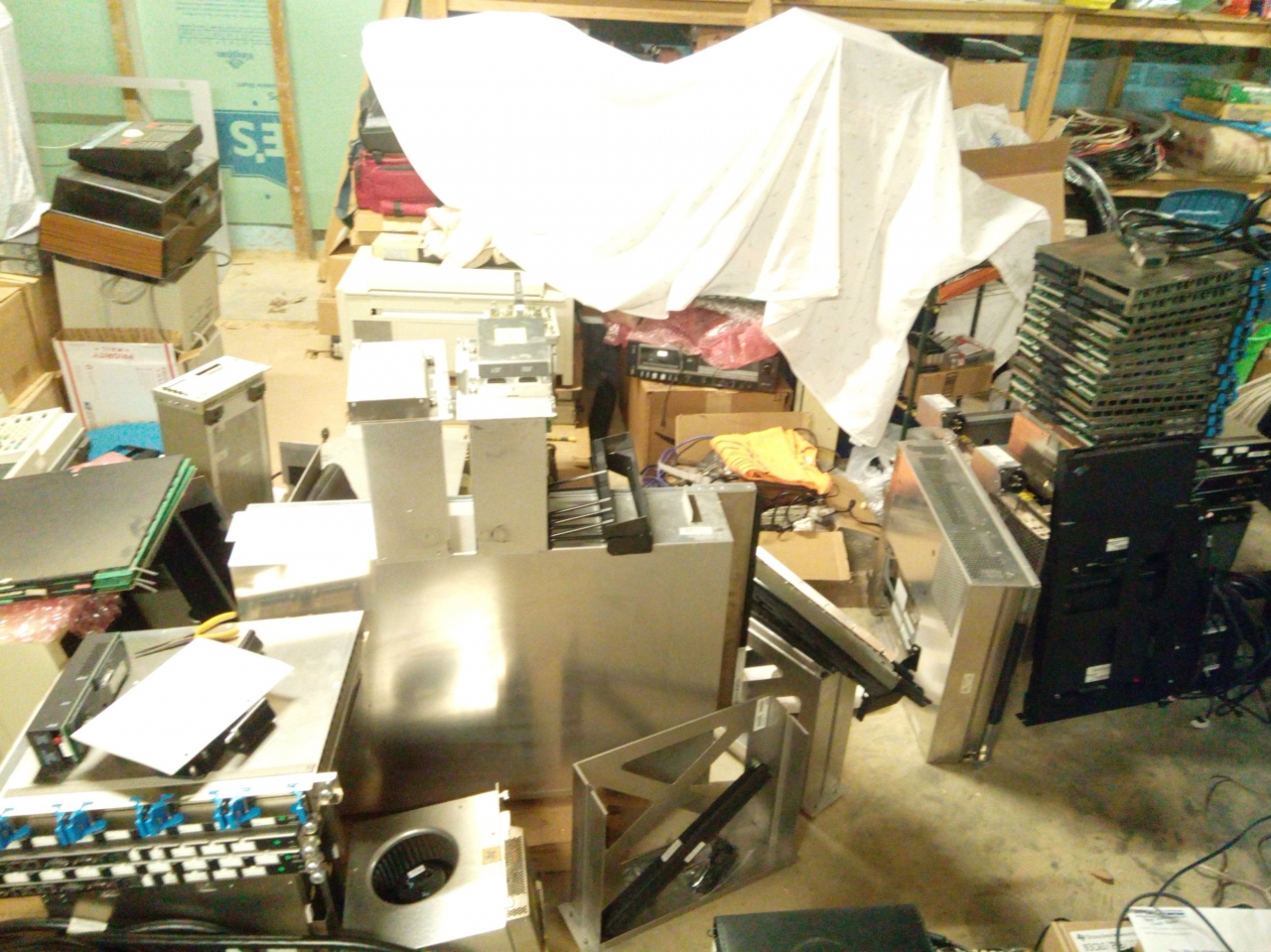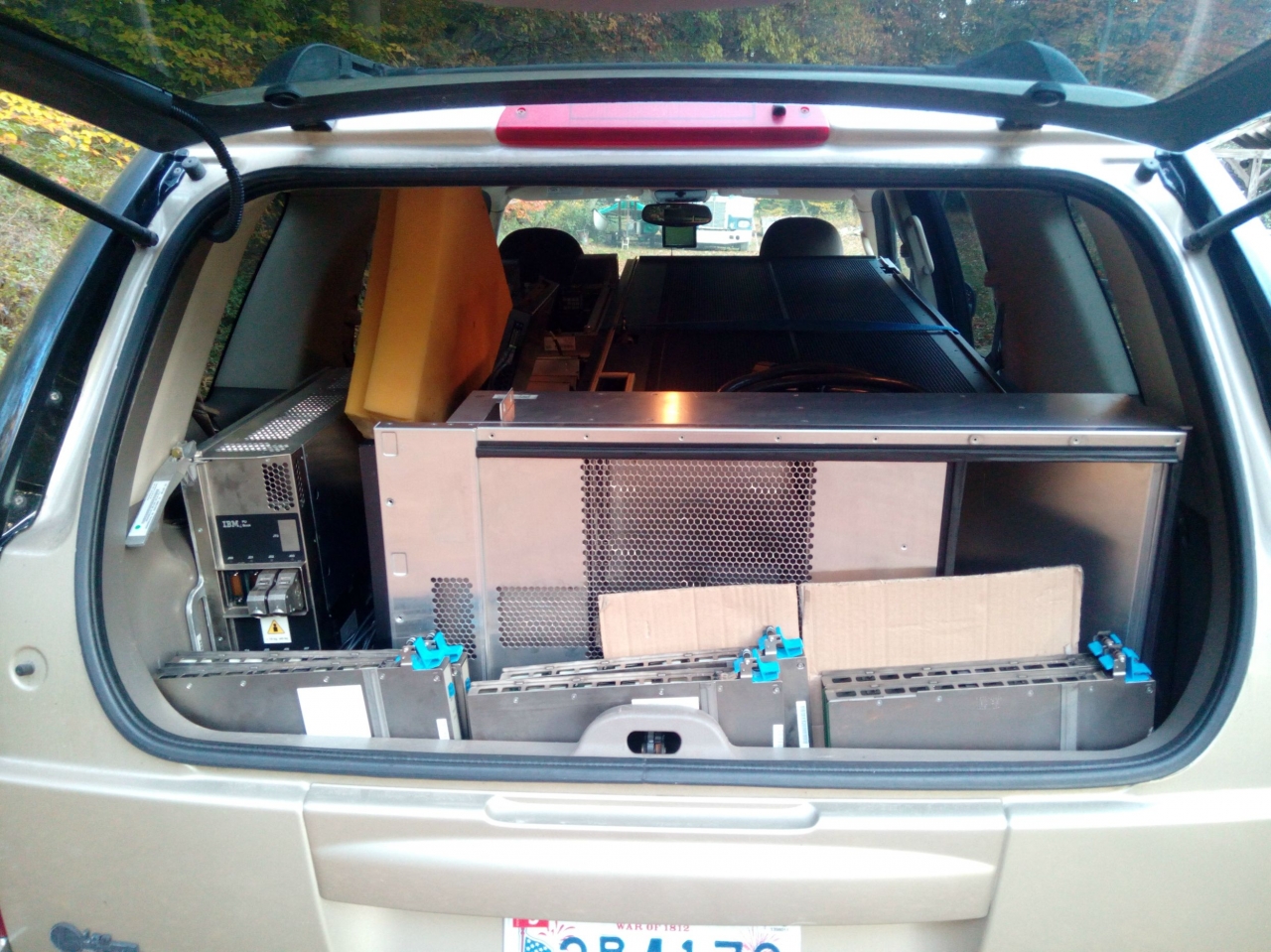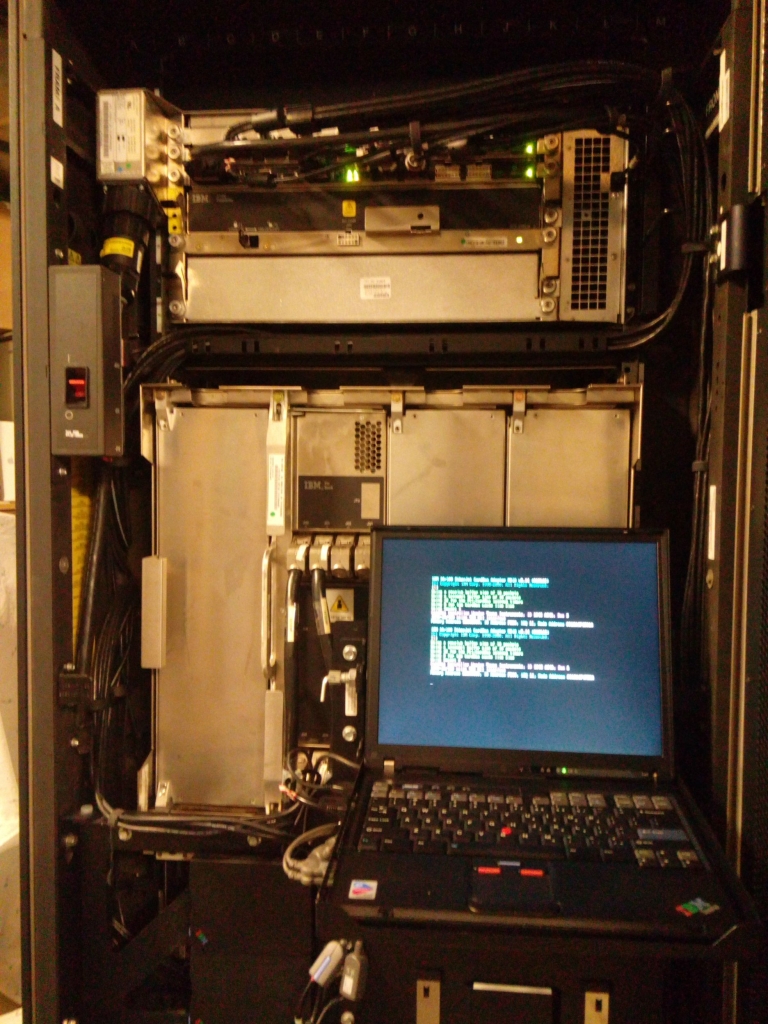 There's a scene in the new "Star Wars" movie where the two young leads, Rey and Finn, are running for their lives through a junkyard as enemy fighter ships shoot at them from above. Hoping to escape the assault, Finn points to a parked ship just off-screen and recommends taking it for a spin. But Rey scoffs and says that ship is "garbage" and steers her companion toward a spiffy, newer freighter parked a couple hundred yards in front of them. That ship, however, is blasted to bits before they can reach it. So, Rey says, "OK, the garbage will do." And, spoiler alert, the "garbage ship" ends up being the legendary Millennium Falcon, last seen by movie audiences 32 years earlier.
There's a scene in the new "Star Wars" movie where the two young leads, Rey and Finn, are running for their lives through a junkyard as enemy fighter ships shoot at them from above. Hoping to escape the assault, Finn points to a parked ship just off-screen and recommends taking it for a spin. But Rey scoffs and says that ship is "garbage" and steers her companion toward a spiffy, newer freighter parked a couple hundred yards in front of them. That ship, however, is blasted to bits before they can reach it. So, Rey says, "OK, the garbage will do." And, spoiler alert, the "garbage ship" ends up being the legendary Millennium Falcon, last seen by movie audiences 32 years earlier.
 Connor Krukosky, an 18-year-old college student in Maryland (pictured at right), is kind of the Rey of mainframes. Last fall, he acquired an IBM z890 machine circa 2005 from an online auction. Ever since then, he has been trying to get it up and running. He will detail his efforts in a special presentation at SHARE in San Antonio on March 2. Krukosky's presentation is titled "I Just Bought an IBM z890—Now What?" and will cover a wide array of topics, ranging from what got him interested in mainframes to his experiences so far tinkering with the z890.
Connor Krukosky, an 18-year-old college student in Maryland (pictured at right), is kind of the Rey of mainframes. Last fall, he acquired an IBM z890 machine circa 2005 from an online auction. Ever since then, he has been trying to get it up and running. He will detail his efforts in a special presentation at SHARE in San Antonio on March 2. Krukosky's presentation is titled "I Just Bought an IBM z890—Now What?" and will cover a wide array of topics, ranging from what got him interested in mainframes to his experiences so far tinkering with the z890.
 "I will show lots of photos of what it looked like to cram a mainframe into a basement," he says with a chuckle. "It will show all of the roadblocks I ran into getting a mainframe and doing something useful with it. There are a lot more difficulties to run into than you’d think. It's not like any standard computer today. It's so different."
"I will show lots of photos of what it looked like to cram a mainframe into a basement," he says with a chuckle. "It will show all of the roadblocks I ran into getting a mainframe and doing something useful with it. There are a lot more difficulties to run into than you’d think. It's not like any standard computer today. It's so different."
Krukosky installed the IBM z890 mainframe in his parents’ basement. "I had to figure out how to move this thing, considering it weighs three-quarters of a ton," he says. "Eventually, I got it down here in my basement, I powered it up for the first time and it seemed to work just fine."
 Krukosky reports that he paid $237 for the machine, a capacity model 320. The young man's z890 has three of its four main processor cores configured as CPs, and CPs are technically capable of running any workload, including Linux. "Someone from IBM ran the serial number for me," he says, "and found out its original price tag was $350,000! With all the stuff I've put into it so far, it's cost me about $350. But that's how the mainframe market works. Out with the old and in with the new every four or five years."
Krukosky reports that he paid $237 for the machine, a capacity model 320. The young man's z890 has three of its four main processor cores configured as CPs, and CPs are technically capable of running any workload, including Linux. "Someone from IBM ran the serial number for me," he says, "and found out its original price tag was $350,000! With all the stuff I've put into it so far, it's cost me about $350. But that's how the mainframe market works. Out with the old and in with the new every four or five years."
Perhaps his biggest challenge has been trying to get some disk storage attached and working. "The storage it is supposed to have with it is very expensive," he points out. "I started doing Fibre Channel Protocol (FCP)-based storage. That required quite a bit of hardware. I was able to install Linux on to it, but I am not able to IPL it. To do that, I needed such things as a SAN switch, a SAN data gateway, a SCSI array and fiber cables between the mainframe and the SAN switch and then between the SAN switch and the SAN data gateway. It was cheap storage. I did all of that for less than $100 or so. That would work perfectly fine for all of your storage needs with one of these machines for Linux as long as you have a Feature Code 9904, and that allows you to initial program load, or IPL, SCSI SAN over Fibre-Channel Protocol. I have someone looking into possibly finding that for me. It was a free feature code back in the day. It's just this machine never got it."
In its time, the z890 was available with anywhere from 8GB to 32GB of main memory, so Krukosky should have plenty of memory to support his personal mainframe workloads. In addition, the z890 was available with 2Gbps FICON/FCP and 10Gbps Ethernet. Big Blue took the wraps off the z890 in 2004 and halted new z890 sales three years later. One of the reasons Krukosky likely got such a fantastic price on his used model is because z/OS 1.13 is the last release of z/OS compatible with this model. However, there are still a number of Linux distributions compatible with the z890.
"I love technology of any kind," he states. "It doesn't matter if it's old or new. I've had a computer in my hands since I was 18 months old, as my parents say. They've done IT for the longest time, and they recently started doing Web development the last couple of years. So, I've always had a connection with electronic technology. I've always been intrigued to learn more about different things. That's what fueled my interest in learning about vintage computers, because they are so vastly different than what is used today. It's interesting to learn the history of how certain technologies were developed. A lot of history came out of IBM and what they did."
He continues, "I always wanted a mainframe. Maybe not specifically one that's only 10 years old. A system 360 is obviously the Holy Grail for a lot of people in the collecting field. But those machines rarely pop up. And when they do, they either get snatched up by a museum or they sell for a lot of money. But for a couple hundred bucks for something that has its roots in the same architecture, it's something that spoke to me and I wanted to learn more about it."
And learn he has. He's also had some help along the way. "At last year's InterConnect conference," he recalls, "there was a guy IBM flew out named Jan Cannaerts who ran a 'Minecraft' server on a z-series machine. I got in contact with him, and he knew as little about the hardware as I did. So, it was basically both of us on Skype calls for hours on end three or four days in a row, trying to figure out things. I wish it was as simple as me powering it on and starting to install some stuff. But it took weeks to learn everything. By the end of all this, I had about 30 PDFs downloaded. And I am not talking 20-page PDFs. These were IBM docs that were 500 pages each. But it wasn't grossly difficult. And Jan helped me not bang my head against the table too often. He helped me see the obviously incorrect things going on, but I think he was learning as much as I was. He's in the mainframe industry, but he's more of a software guy."
One difficulty Krukosky had to overcome was that the mainframe was originally wired for three-phase electric power. "If you know anything about electrical, you usually don't get three-phase in a standard house," he remarks. "Fortunately, while setting it up, within the manual for this machine, it basically said: 'Connect the first two phases, ignore the third and it will run fine.' My parents are doing some home renovations. So, hey, there have been a lot of wires run anyway!"
Check out Krukosky’s Session: “I Just Bought an IBM z890 – Now What?”
Date: Wednesday, March 2
Time: 3:15-4:15 p.m.
Connor Krukosky is an 18-year-old college student at Cecil Community College in Maryland. He is an aspiring electrical engineer who collects, restores and operates vintage computers as a hobby. He also likes to work on computer hardware, software and even designs his own circuitry in his free time. He encourages all SHARE in San Antonio attendees to look for him from Monday, Feb. 29 to Wednesday, March 2 to pick his brain on all things mainframe.
—Information, Inc.